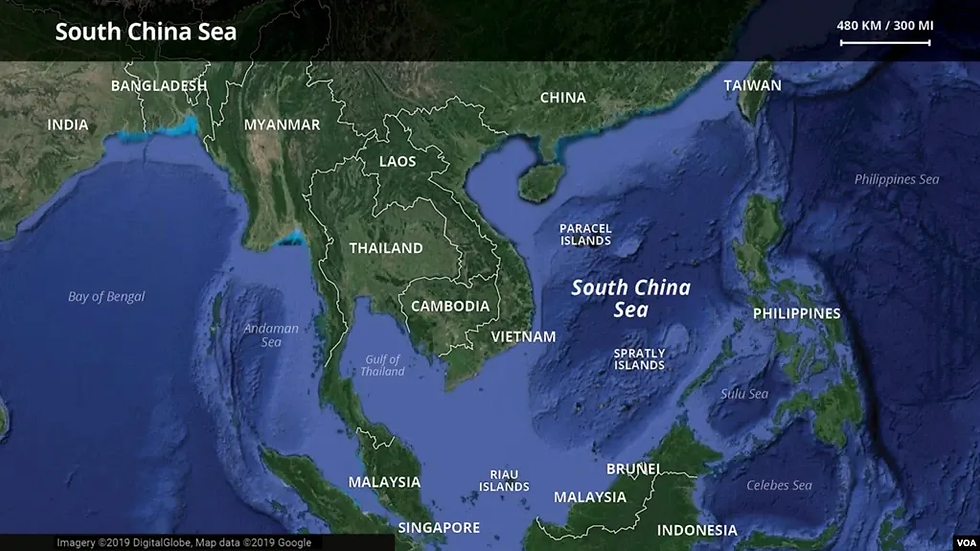Bhramos Anti-Ship Missile Acquisition: First Step to Credible Deterrence
- RAdm Rommel Jude G Ong (RET)

- Mar 8, 2022
- 4 min read
Updated: Mar 9, 2022

Photo Source: MissileThreat
China’s incursion into Philippine waters has been an operational problem for the Philippine Navy (PN), since the Scarborough Shoal stand-off ten years ago, and the continuing blockade around the Second Thomas Shoal where the BRP Sierra Madre is situated. Notwithstanding the “impediments” imposed by President Duterte’s pro-China policy, it could not be remiss in its mandate of securing the country’s maritime interests. While maritime incidents in Philippine waters involved China’s coast guard and its maritime militia, the key enabler of the success of its grayzone tactics has always been the People’s Liberation Army-Navy’s (PLA-N) surface fleet. The PLA-N presence beyond the horizon has shaped the calculations of the PN’s potential responses against intimidation of Filipino fisherfolks and commercial shipping. Certainly, the Armed Forces (AFP) does not have the financial and industrial muscle to go toe-to-toe against China’s naval shipbuilding capacity.
A report made by the US Congressional Research Service entitled “US vs China Battleforce for CY 2020” showed the trajectory of advantage in numbers of the PLA-N over the US Navy (USN). With increased defense spending, availability of state-owned shipyards, and access to foreign technologies, China was able to churn out new classes of destroyers and frigates annually. This is aggravated by the conversion of older classes of naval vessels repurposed for their coast guard. One of the discernable aspects of China’s maritime strategy is to establish “sea control” over the South China Sea, through a combination of its navy, coast guard, militia, and in interplay with its naval bases in Hainan, the Paracel’s and the Spratly’s Island Group. However, a USN failure to provide a countervailing balance against China’s naval build-up might inspire an overconfident and adventurist Chinese Communist Party (CCP) to pursue a more ambitious territorial claim.
The game-changer is the acquisition of India’s Bhramos anti-ship missile system for the Philippine Marine Corps (PMC). After years of planning and negotiations within the AFP, the PN’s asymmetric and cost-effective solution has finally achieved its first step. However, attaining credible deterrence in the West Philippine Sea (WPS) remains a work in progress. The PMC’s Coastal Defense Regiment (CDR) needs to be capacitated across the board: air defense, joint ISR support, command and control protocols, over the horizon targeting system, doctrine implementation, civil works, and manpower among others. These are complementary capabilities that are of varying status in the acquisition, development, and execution pipeline.
Not to be overlooked is the need to establish a clear “chain of authority” and to define the tactical conditions that would permit the Marines to fire against encroaching Chinese naval vessels. These “rules of engagement” must be clear from the missile batteries up to the level of the Commander- in-Chief. While a land-based anti-ship missile system can be considered as a defensive weapon, the past ten years have taught that everything that happens within the South China Sea has strategic implications.
It would be an interesting surprise if India convinces other coastal states around the South China Sea, such as Indonesia and Vietnam, to acquire the Bhramos anti-ship missile system, as well. This would create an opportunity for a minilateral arrangement to take shape among like-minded ASEAN member states. Notionally, these states could establish “strategic buffers” within the Bhramos’ maximum range, and collectively push the PLA-N’s surface fleet away from their Exclusive Economic Zones (EEZ) and towards the less contentious part of the South China Sea. An unexplored area of collaboration would be between the USN and the coastal states around the South China Sea. A “brother-sister tandem” can be set up, in which USN vessels can provide targeting data against PLA-N surface targets, while the land-based missile batteries provide “fire support.”
On the other side of the Pacific, the US Marine Corps (USMC) and the US Army (USA), are also looking at changes in their force structure that will allow them to deploy missile-equipped forces in isolated islands for “ship-killing missions.” Among the two, the USMC has advanced more rapidly following the activation of a Marine Littoral Regiment (MLR). However, a foreseeable complication in the USMC’s operating concept is getting host-nation approval for its deployments. Given the Chinese response against South Korea on the deployment of the THAAD missile system, the Philippine government might hedge approval for such types of missions in their home soil. More so, if another pro-China politician wins as president in the upcoming Philippine national elections this year. Perhaps an acceptable alternative is to pre-deploy their missile batteries in-country and allow the CDR to serve as the caretaker unit. This could be complemented by rotational deployment of MLR units for the purpose of combined training.
The PN’s surface fleet will require significant investment to become a relevant actor in the West Philippine Sea, be it in terms of quality or quantity. The Bhramos represents an initial step towards restoring a semblance of “sea control” over Philippine waters, thereby enhancing the country’s ability to enforce its sovereignty and sovereign rights along the WPS. However, unless the AFP restores the Philippine-US alliance, improve cooperative mechanisms with strategic partners, shift, and right-size the major services towards external defense, and modernize responsibly, the Bhramos might be the first and last opportunity to retake the WPS.

RADM Rommel Jude Ong (Ret) is currently serving as Professor of Praxis with the Ateneo School of Government (ASOG). He was the former Vice Commander of the Philippine Navy, during which he chaired the Navy’s Modernization Board. He graduated from the Philippine Military Academy in 1987, and completed his Masters in Development Management at the Asian Institute of Management in 1996.




Are you in need of an urgent loan? such as personal loan,company loan,business loan,loan to pay depth,educational loan,any kind of loan you are looking for ... Just only 3% interest rate.. Contact us now at email only (mailmuthootgroupp@gmail.com)